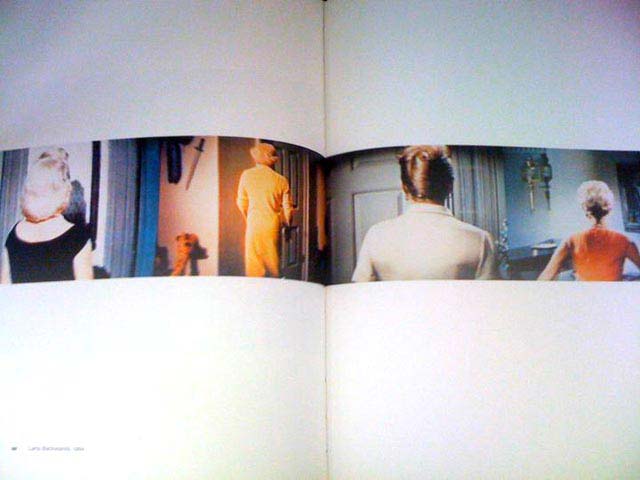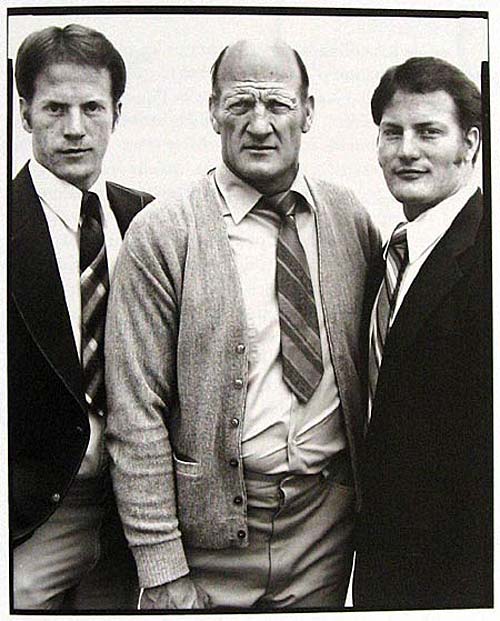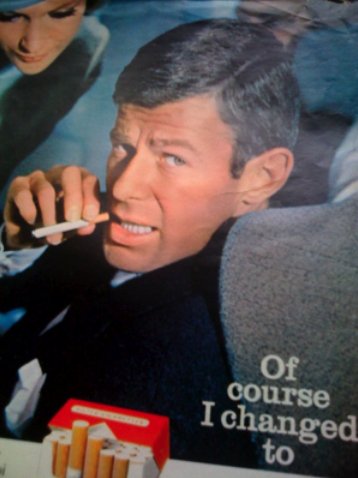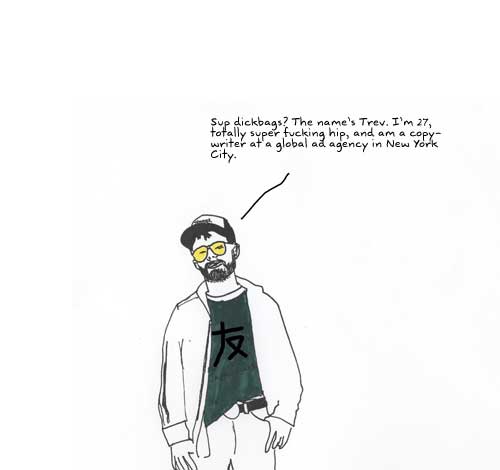archives
Why had they chosen all that part? Not wholly for the smooth caress.

I used to have cello lessons on Saturday morning. I would play a certain piece in front of my teacher and then she would give me a new piece to practice for next week.
Some weeks, I practiced for half an hour the following Sunday, then half an hour on Monday, the same on Tuesday, etc., so that when my next lesson would be up, I would have practiced for a total of three hours (6 days; half an hour each). And I usually would be able to play the piece in front of my teacher reasonably well.
Some weeks, however, I forgot about it altogether. By the time it was Friday, I would realize, “It’s my cello lesson tomorrow and I haven’t practiced at all yet!”
What I would usually do then is think, “I will just practice for three hours in a row now. That’s the same amount of time as half an hour each day for six days, and I am sure I will be fine.” But I never was. It never worked. I would be terrible, and my teacher’s ears would hurt for hours after she sent me away.
I couldn’t understand at the time how that was possible. Three hours is three hours, right?
Of course, as adults, we realize that our brain needs rest in between practice sessions. It needs to recuperate before you can put new information and skills into it, and the periods of “inactivity” are just as important as the practice itself. Practice sessions are much less effective if you don’t have the slow periods in between them.
Now, as an adult examining corporate strategies, I see that firms often fall into the same trap.In order to catch up with competitors, for instance, they enter new markets at double the speed, undertake twice as many acquisitions, or hire double the number of employees. But, unfortunately, it doesn’t work that way. Just like me practicing the cello, organizations need rest and time in between growth spurts to recuperate and digest the effort. Trying twice as hard does not mean you’ll get twice the benefits. There are limits to how fast you can grow, without starting to suffer from it.
We call this “time compression diseconomies” - a term coined by professors Dierickx and Cool from INSEAD.
{ Freek Vermeulen/Harvard Business Review | Continue reading }
Year before I was born that was: sixtynine.

Desmond Morris, a curator of mammals at the London Zoo, suggested that permanently enlarged breasts in human females resulted from hominid bipedalism. (…)
The link between bipedalism and permanent breast enlargement, according to Morris, has to do with the erotic nature of breasts. He argues that as early humans (hominids) began walking upright, face-to-face encounters between the sexes became the norm, affecting the position used in sexual intercourse: males would no longer mount females from behind as they do among non-human primates. In the non-human primate position, presentation of the female buttocks to the male is an erotic display that stimulates male interest and excitement. with the advent of bipedalism, Morris argues, if females were to be successful in shifting male interest around to the front, evolution would have to do something to make the female frontal region more stimulating to males. This was accomplished, Morris says, through self-mimicry in which female breasts came to look like rounded buttocks: female breasts became mimics of “the ancient genital display of the hemispherical buttocks.”
Szalay and Costello (1991) have continued this line of thinking, but argue that permanently enlarged breasts sexually arouse males not because they look like buttocks, but because they mimic the appearance of female genitalia.
{ Frances E. Mascia-Lees, Sarah Lawrence College, Why Women Have Breasts, 2002 | Continue reading }
photo { Reka Ebergenyi photographed by Eric Fischer }
The motivation for me was them telling me what I couldn’t be, oh well

Eternity! What mind of man can understand it? And remember, it is an eternity of pain. Even though the pains of hell were not so terrible as they are, yet they would become infinite, as they are destined to last for ever. But while they are everlasting they are at the same time, as you know, intolerably intense, unbearably extensive. To bear even the sting of an insect for all eternity would be a dreadful torment. What must it be, then, to bear the manifold tortures of hell for ever? For ever! For all eternity! Not for a year or for an age but for ever. Try to imagine the awful meaning of this. You have often seen the sand on the seashore. How fine are its tiny grains! And how many of those tiny little grains go to make up the small handful which a child grasps in its play. Now imagine a mountain of that sand, a million miles high, reaching from the earth to the farthest heavens, and a million miles broad, extending to remotest space, and a million miles in thickness; and imagine such an enormous mass of countless particles of sand multiplied as often as there are leaves in the forest, drops of water in the mighty ocean, feathers on birds, scales on fish, hairs on animals, atoms in the vast expanse of the air: and imagine that at the end of every million years a little bird came to that mountain and carried away in its beak a tiny grain of that sand. How many millions upon millions of centuries would pass before that bird had carried away even a square foot of that mountain, how many eons upon eons of ages before it had carried away all? Yet at the end of that immense stretch of time not even one instant of eternity could be said to have ended. At the end of all those billions and trillions of years eternity would have scarcely begun. And if that mountain rose again after it had been all carried away, and if the bird came again and carried it all away again grain by grain, and if it so rose and sank as many times as there are stars in the sky, atoms in the air, drops of water in the sea, leaves on the trees, feathers upon birds, scales upon fish, hairs upon animals, at the end of all those innumerable risings and sinkings of that immeasurably vast mountain not one single instant of eternity could be said to have ended; even then, at the end of such a period, after that eon of time the mere thought of which makes our very brain reel dizzily, eternity would scarcely have begun.
{ James Joyce, A Portrait Of The Artist As A Young Man, 1916 | Continue reading }
[Deep is the pain … But deeper is the joy… Pain says Go! … But joy wants eternity.] Never yet have I found the woman by whom I should like to have children, unless it be this woman whom I love: for I love thee, O Eternity!
{ Nietzsche, Thus Spoke Zarathustra, 1883 -1885 | Continue reading }
image scanned from { John Waters, Director’s Cut }
So rather than being hypnotized







{ Marilyn Monroe photographed by Bert Stern at the Bel-Air Hotel in LA six weeks before her death on Aug. 5, 1962 }
The photographs, which include some of the most explicit images taken of the actress, show her principally in three situations: naked on a bed, baring her shoulders, back and legs; holding a transparent chiffon scarf before her naked torso; and covering her breasts with paper flowers. In other images she wears black cocktail dresses or plays mischievously with necklaces.
Yet if some of these poses might once have been considered shocking (and were, in fact, not published until 20 years after her death), they seem tame today. So rather than being hypnotized by Monroe’s raw sexuality, visitors here are invited to study the pictures for what they reveal about her.
“She was going through a hard time with her health, her career and her men,” Mr. Stern said, recalling that she had just been fired from the set of George Cukor’s unfinished movie, “Something’s Got to Give.” “I thought the photo session would be uplifting for her.”
Mr. Stern was on assignment for Vogue, but he notes in the catalog that he had always hoped to photograph Monroe nude and brought only some chiffon scarves and jewelry as accessories. Monroe’s assistant told him to order three bottles of Dom Pérignon Champagne. Monroe arrived five hours late — Mr. Stern remembers the day as June 22 — and, he says, within 15 minutes she had agreed to pose “topless” with the scarves.
“We worked from about 4:30 p.m. to about 3 a.m.,” he said from New York. “But then Vogue decided the first session was too sexy, and they wanted me to go back two or three weeks later and do fashion. After a while, she said: ‘I’m tired of doing fashion. Can we go back to doing what we did the first day?’ That’s when we did the pictures of her on the bed. By then, she was pretty drunk.”
Vogue published eight pages of the fashion shoot the day after Monroe died; it ran 12 pages of the nude images only in 1982.
Why not rather from its last? From today?

Tell about places you have been, strange customs. The other one, jar on her head, was getting the supper: fruit, olives, lovely cool water out of the well stonecold like the hole in the wall at Ashtown. Must carry a paper goblet next time I go to the trottingmatches. She listens with big dark soft eyes.
{ James Joyce, Ulysses, published in 1922 | Continue reading | Ulysses contains approximately 265,000 words from a lexicon of 30,030 words (including proper names, plurals and various verb tenses), divided into eighteen episodes. | Wikipedia | Continue reading }
images { Hilo Chen, Beach, 2005 | Huata, Open The Gates of Shambhala EP }
‘Thoughts are the shadows of our feelings–always darker, emptier, simpler.’– Nietzsche
Two Cornell psychologists found we have two separate systems for memories, which helps explain how we can “remember” things that never happened. (…)
here are two distinct types of memory: Verbatim, which allows us to recall what specifically happened at any given moment, and gist, which enables us to put the event in context and give it meaning. (…) They occupy different sections of the brain. (…)
When an event occurs, verbatim memory records an accurate representation. But even as it is doing so, gist memory begins processing the information and determining how it fits into our existing storehouse of knowledge. Verbatim memories generally die away within a day or two, leaving only the gist memory, which records the event as we interpreted it. Under certain circumstances, this can produce “phantom recollection” in which gist memory creates a vivid but illusory image in our mind.
It? Them. Such a bad headache.

{ Richard Avedon, Lyal Burr, coal miner, and his sons Kerry and Phillip, The Church of Jesus Christ of Latter-Day Saints, Koosharem, Utah, May 7, 1981 }

{ Avedon’s instructions to his printer. | Scanned from Evidence 1944-1994: Richard Avedon | Amazon | Art Forum book review }
Can’t you see that it never can be

The amount of stress we endure is increasing because of our focus on efficiency. Stress is caused by uncertainty, more specifically, by doubts in our ability to handle something. As machines and computers handle more things that are predictable and certain, we are pressured to deal with more things that are unpredictable and uncertain. This inevitably leads to more stress. As soon as our tasks become predictable and certain, we automate them using our technology. The result of this process of streamlining is that we are increasingly called upon to use our, what I would call, irrational abilities, such as instincts, sensibilities, creativities, and interpersonal skills. These things are, by nature, unpredictable.
Take stock trading, for instance. When there were no computers to process the trades, the number of trades you could do in a day was limited. A certain amount of your work as a trader involved processing of paperwork, communicating with others, and doing some arithmetic; tasks that are predictable and not stressful. Today, a click of a button essentially takes care of all of those predictable tasks, and you skip right ahead to another stressful decision-making.
As another example, take graphic designers. Now with computers handling everything from typesetting, layout, image processing, color management to printing, what used to be done by several specialists are now combined into one person. The number of jobs one can handle in a year increased dramatically. Now designers spend more time being creative, and less time creating the final products. This may sound good, but in terms of stress and rewards, it is not. Because creativity is irrational and unpredictable, coming up with a creative solution can be highly stressful. Designers now have to come up with significantly more creative solutions per year for the same amount of money. (…)
Despite all the stresses we deal with in our lives, we feel that we are running towards nowhere, very much like running on a treadmill. I believe this is because the whole nation, the whole economy, is on a treadmill. In analyzing our economic growth, we focus on matters that are actually irrelevant to our feelings. We falsely believe that technological advancement, increase in production, and providing greater choice would make us happier, but we have more indications to the contrary.
photo { Robert Whitman }
‘Nearly all men can stand adversity, but if you want to test a man’s character, give him power.’ –Abraham Lincoln

I’m getting to that age where it pays to be proactive and start getting tested for the myriad of things that can go wrong with my body. One of the things I wanted to get over with is a check for colon cancer. Although I’m officially younger than the “suggested age” for a colonoscopy, I wanted to get it out of the way. I had read and heard too many stories about people who found polyps and how if “they had only caught them a little sooner” it would be no big deal to remove them. So I set my appointment and went for it.
Like every guy, the thought of being violated by a long tube is at the very bottom of the list of things I want to do on a summer day. I could live with having to take all the laxatives that lead up to the procedure, That’s just more time to get my reading done. But the tube up the outdoor, that’s scary.
Well this morning was the morning. I had officially lost 4 pounds to the laxative over the past 24 hours and was surprisingly not hungry after going without food for the past 24 hours as I got to the hospital at the prime time of 7am.
I was definitely nervous. Despite doctors and nurses telling me it would be a breeze, I was naturally skeptical.
A breeze was an overstatement. I can honestly say that if it made medical sense to get one done every year, i would have no problem with it. It was easy and breezy .
Once I got into the Gastro Room where they did these, they told me that they were going to knock me out, and I would get a nap and wake up like nothing happened . They were right. One minute Im talking rugby, the next I’m waking up, picking up the conversation where I left off and being told to “dispell the air in my system”.
No where else can you rip off some huge farts and have 3 nurses and a doctor, while maintaining a very professional demeanor, tell you that you aren’t done yet and demand that you let loose a few more.
photo { Tim Barber }
‘And on the eighth day, the Lord God said Let there be boogie!‘ –G.E. Nordell

I bought a Stereo! Wow! With two speakers!
But then I heard the quad with the four speakers and I was like this is it, so I got rid of the stereo and got the quad.
I’m listening to this thing and I’m like “Hey this sounds like SHIT!”
So, I got rid of that and got the dodecaphonic with the 12 speakers.
This was more to my liking…for a while.
But the ear gets pretty sophisticated pretty fast and I got rid of that and got the milliphonic with the 1,000 speakers.
And I’m listening to that one and I’m like, “Hey, this sounds like SHIT too! The other one was SHIT one, this one is SHIT too!”
So, I traded that in and got the googlephonic, which is the highest number of speakers you can have before infinity.
Sounds like SHIT!
So, then I said, “Hey, maybe it’s the needle!”
I had the typical diamond needle. I searched around got the moonrock needle, cost me 3 million bucks, but what the hey. So, now I have a googlephonic stereo with a moonrock needle.
It’s okay for a car stereo, I wouldn’t want it in my house.
{ Steve Martin }
logotype { House Industries }
‘The trouble with the rat race is that even if you win, you’re still a rat.’ –Lily Tomlin

A prisoner who has commited a crime is before a judge. The judge sentences the prisoner to death by hanging, but adds a cruel twist to the sentence. The prisoner is to be hanged on one of the following seven days – but it must be a surprise which day it is. The prisoner is not allowed to know. Returning to his cell the prisoner is a bit disturbed. His lawyer tells him not to worry.
“Look,” the lawyer says, “they can’t hang you at all now. The judge has made it a condition that you must be surprised. But think about it. If you make it to Saturday without being hung then Sunday is the last day they could do it. But then it wouldn’t be a surprise would it? So that makes Saturday the last day they could possibly hang you. But hang on – if Saturday is the last possible day then it also can’t be a surprise to hang you then. So that make Friday the last possible day – and so on back through all the days of the week. They can’t possibly hang without breaking the judge’s orders?
The prisoner is comforted by this line of reasoning and stops worrying about the prospect of being hung at all. When on Wednesday he is taken from his cell and hung.
if someone comes at me w/ the whole oh-you’re-a-supertsar angle, i just play that character, but

it always makes me perplexed when people refuse eternal youth. […] ulysses: ‘i’m glad someone invented death.’
‘Consistency is contrary to nature, contrary to life. The only completely consistent people are dead.’ –Aldous Huxley
We live in a world of complex systems. The environment is a complex system. The government is a complex system. Financial markets are complex systems. The human mind is a complex system—most minds, at least.
By a complex system I mean one in which the elements of the system interact among themselves, such that any modification we make to the system will produce results that we cannot predict in advance.
Furthermore, a complex system demonstrates sensitivity to initial conditions. You can get one result on one day, but the identical interaction the next day may yield a different result. We cannot know with certainty how the system will respond.
Third, when we interact with a complex system, we may provoke downstream consequences that emerge weeks or even years later. We must always be watchful for delayed and untoward consequences.
The science that underlies our understanding of complex systems is now thirty years old. A third of a century should be plenty of time for this knowledge and to filter down to everyday consciousness, but except for slogans — like the butterfly flapping its wings and causing a hurricane halfway around the world — not much has penetrated ordinary human thinking.
On the other hand, complexity theory has raced through the financial world. It has been briskly incorporated into medicine. But organizations that care about the environment do not seem to notice that their ministrations are deleterious in many cases. Lawmakers do not seem to notice when their laws have unexpected consequences, or make things worse. Governors and mayors and managers may manage their complex systems well or badly, but if they manage well, it is usually because they have an instinctive understanding of how to deal with complex systems. Most managers fail.
Why? Our human predisposition treat all systems as linear when they are not. A linear system is a rocket flying to Mars. Or a cannonball fired from a cannon. Its behavior is quite easily described mathematically. A complex system is water gurgling over rocks, or air flowing over a bird’s wing. Here the mathematics are complicated, and in fact no understanding of these systems was possible until the widespread availability of computers.
One complex system that most people have dealt with is a child. If so, you’ve probably experienced that when you give the child an instruction, you can never be certain what response you will get. Especially if the child is a teenager. And similarly, you can’t be certain that an identical interaction on another day won’t lead to spectacularly different results.
If you have a teenager, or if you invest in the stock market, you know very well that a complex system cannot be controlled, it can only be managed. Because responses cannot be predicted, the system can only be observed and responded to. The system may resist attempts to change its state. It may show resiliency. Or fragility. Or both.
An important feature of complex systems is that we don’t know how they work. We don’t understand them except in a general way; we simply interact with them. Whenever we think we understand them, we learn we don’t. Sometimes spectacularly.
Philosophers give ideas away for free, if you think about it

MOMA’s founding director and “intellectual creator” viewed Johns’ first solo show at Leo Castelli and telephoned MOMA curator Dorothy Miller to come right over so they could select works. They purchased Johns’ 1954 Flag, Green Target, Target with Four Faces and White Numbers (thus anointing the 28-year-old into the modernist pantheon).
{ Art Net | Continue reading }
Rauschenberg opened up the possibilities that are now being mined by contemporary con-artists such as Damien Hirst, Mike Kelley, and Jeff Koons. Rauschenberg didn’t poeticize the ordinary. He aggrandized the ordinary, he put a high-art style price tag on the ordinary.
{ The New Republic | Continue reading }
$12 million, that’s how much Damien Hirst’s famous shark sold for in 2005. …. It’s not just about the work of art; rather, the value placed on a particular work derives from how it feels to own that art. Most art dealers know that art buying is all about what tier of buyers you aspire to join, about establishing a self-identity and, yes, getting some publicity. The network of galleries and auction houses spends a lot of its time, money, and energy giving artworks just the right image. Remarkably, buyers support the process in the interest of coming out on top, rather than fighting it and trying to get the lower prices. ….
art critics don’t matter much anymore. If the magazine Art in America pays $200 for a review article, why listen to that writer? We have a much richer and generally more accessible guide to the value of art — namely the market itself. ….
Damien Hirst is now worth more than Dali, Picasso, and Warhol were at the same age, put together. The point isn’t whether, in aesthetic terms, he deserves that compensation. The question is whether this way of organizing the art market makes overall sense.
Earlier this year, hedge-fund millionaire Daniel Loeb made a sweet trade. The 43-year-old partner at Third Point LLC had purchased a rare asset in 2003. He found a buyer in January and sold it for a 500% profit, making a quick $1 million. …
Hedge-fund managers are reinventing the art of the art deal. With their sudden riches, quest for status and big houses in need of adornment, fund managers have become some of the most active buyers and sellers in the art world.
They have been buying up hundreds of millions of dollars of paintings, sculptures and pop-art installations. They have helped turn middling artists into media stars. … where others see art, many fund managers see another market ripe for trading, buying, selling and flipping. Many invest heavily in one or two artists, to build up a “position.” They promote the value of the artists, help boost their prices and sometimes later unload pieces through a tax-favorable gift or sale.
“Who makes that kind of money in the stock market?” said Sender, 38, as he swiveled round the 21 screens at his desk in New York. “In the hedge-fund business these days, you’re having a great year if you make 20 percent.”
Sender revamped his hedge fund Exis Capital Management Inc. last year, returning some investors’ money after losses in 2004 and 2006. Meanwhile, the value of his art, with works by Richard Prince, Mike Kelley and Andreas Gursky, has continued to rise, quadrupling in 10 years.
Art is now his biggest single asset — 800 works that Sender values at more than $100 million. He said he recouped most of the $25 million he spent in the past 10 years on art with the sale of about 40 pieces.
Sender is a new type of financier collector, with Steven Cohen and Daniel Loeb. Their gains on works by Prince and Martin Kippenberger aren’t just dumb luck in a boom. They apply rules for buying art, as well as stocks.
Sender tries to buy the best works of artists he admires, whose pieces also are being acquired by museums and other collectors.
{ Bloomberg | Continue reading }
When a big-name artist has a gallery show at a big-name gallery like White Cube or Gagosian, his best paintings aren’t even on public view: “The new buyer has little chance of even seeing the hot paintings, which will be kept in a small private room. What is hung in public areas is available for purchase but of lesser significance.” ….
One of the things which fascinates me about the recent run-up in contemporary art prices is that it’s meant a huge change in the way that many artists work: it’s commonplace nowadays for artists to have dozens of assistants, something which was a decidedly unusual and controversial practice back in the days of Warhol. With prices for new works regularly breaking into seven figures, art has become bigger and more polished; it often uses much more expensive materials and can draw on resources which would have been unthinkable 15 years ago.
{ Portfolio | Continue reading }
To Mr. Galenson markets are what make the 20th century completely different from other eras for art. In earlier periods artists created works for rich patrons generally in the court or the church, which functioned as a monopoly. Only in the 20th century did art enter the marketplace and become a commodity, like a stick of butter or an Hermès bag. In this system, he said, breaking the rules became the most valued attribute. The greatest rewards went to conceptual innovators who frequently changed styles and invented genres. For the first time the idea behind the work of art became more important than the physical object itself.
artwork { Ellsworth Kelly }
Helicopters, Rolls Royces with Louie VaTonne interior and

Dual Function Design, November 10, 2008
By B. Govern “Bee-Dot-Govern”This item has wolves on it which makes it intrinsically sweet and worth 5 stars by itself, but once I tried it on, that’s when the magic happened. After checking to ensure that the shirt would properly cover my girth, I walked from my trailer to Wal-mart with the shirt on and was immediately approached by women. The women knew from the wolves on my shirt that I, like a wolf, am a mysterious loner who knows how to ‘howl at the moon’ from time to time (if you catch my drift!). The women that approached me wanted to know if I would be their boyfriend and/or give them money for something they called meth. I told them no, because they didn’t have enough teeth, and frankly a man with a wolf-shirt shouldn’t settle for the first thing that comes to him.
I arrived at Wal-mart, mounted my courtesy-scooter (walking is such a drag!) sitting side saddle so that my wolves would show. While I was browsing tube socks, I could hear aroused asthmatic breathing behind me. I turned around to see a slightly sweaty dream in sweatpants and flip-flops standing there. She told me she liked the wolves on my shirt, I told her I wanted to howl at her moon. She offered me a swig from her mountain dew, and I drove my scooter, with her shuffling along side out the door and into the rest of our lives. Thank you wolf shirt.
Pros: Fits my girthy frame, has wolves on it, attracts women Cons: Only 3 wolves (could probably use a few more on the ‘guns’), cannot see wolves when sitting with arms crossed, wolves would have been better if they glowed in the dark.
{ Amazon.com }











